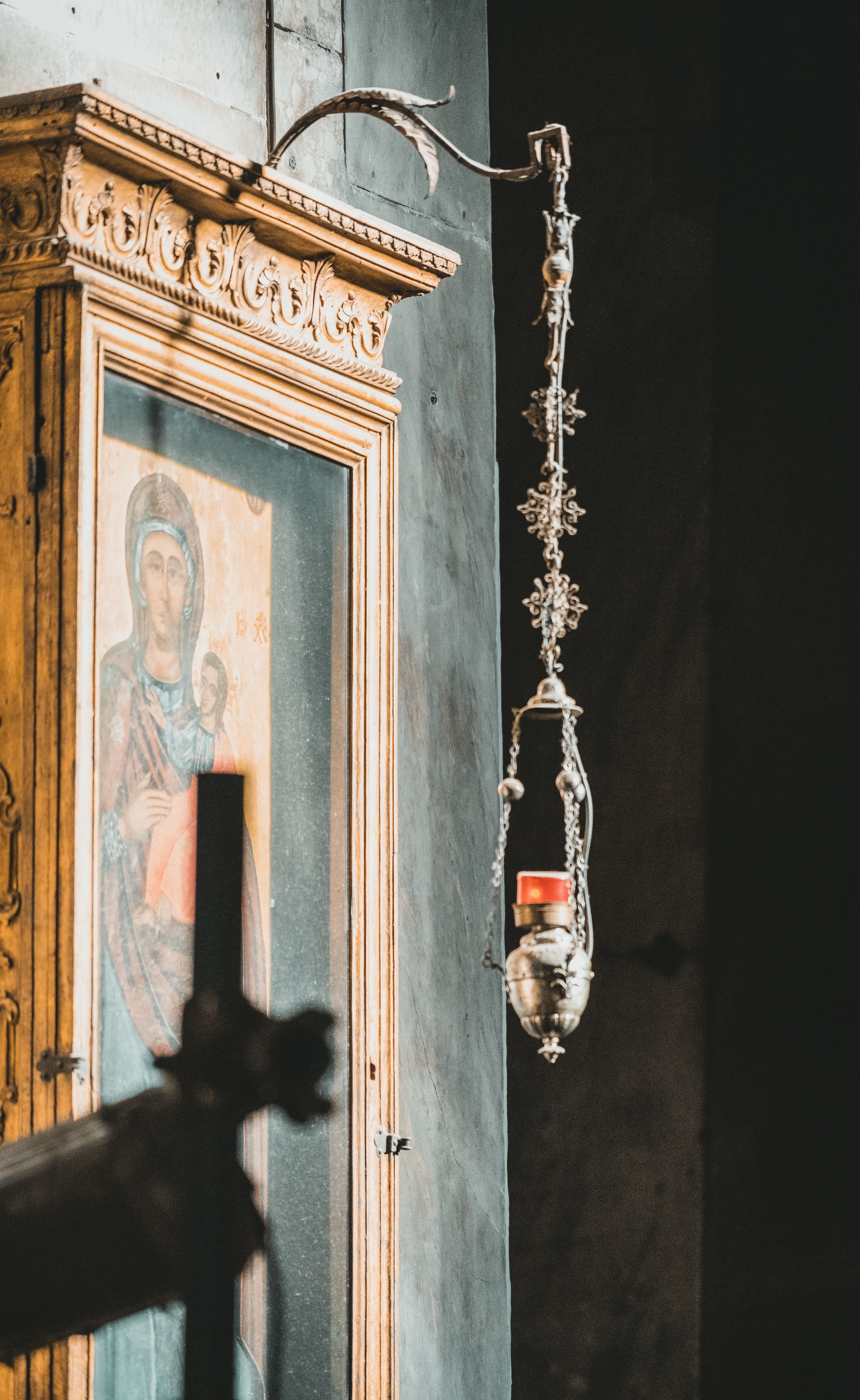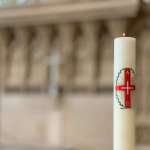
By Kimberly Bruce
“Saint Margaret Clitherow, with moving simplicity, expressed the meaning of her life and death in a succinct way: ‘I die for the love of my Lord Jesus.’”
So stated Pope St. Paul VI when in 1970 he canonized “the Pearl of York” among 40 English martyrs, all of whom died for their Catholic faith during the Reformation. Saint Margaret (feast day: Aug. 30) was killed for sheltering Catholic priests in her home and allowing them to celebrate Mass during the reign of Queen Elizabeth I.
Wife and mother
Born around the year 1556, Margaret Middleton was the daughter of Thomas Middleton, a wax-chandler and Sheriff of York. In 1571, at age 15, she married a widower, John Clitherow, who was a prosperous butcher.
Three years into their marriage, Margaret converted to Catholicism. Though John had a brother who was a Catholic priest, he himself was aligned with the new Protestant Church of England. Margaret was known as a “recusant,” one who failed to attend government-mandated religious services. She was repeatedly fined for this transgression.
Beloved by everyone who knew her, including her servants, no one reported Margaret during the ensuing years for also harboring Catholic priests in her home and hiding their vestments and articles for Mass.
Internments
John allowed their two children, Henry and Anne, to be raised in the Catholic faith by their mother. Because of Margaret’s continued non-attendance at Anglican services, however, she incurred her first of several internments in York Castle on Jun. 6, 1576. During Margaret’s imprisonments, she learned to read and write in Latin. She also delivered the couple’s third child, William, during one of her incarcerations.
It was reported that, after Margaret was released from prison, she visited the gallows at Tyburn and Knavesmire where five priests were hanged between 1582-1583. There she prayed beneath the scaffold of their martyrdom.
On March 10, 1586, while John and Margaret’s children and others were attending lessons with a tutor in the Clitherow home, their house was raided by authorities. When one little boy was threatened with torture if he failed to reveal if any Catholic priests or articles were in the home, he then led authorities to a hiding place for priestly vestments.
Margaret was immediately arrested. Pressured by many, including judges, to enter a plea because of the horrific way she would be put to death if she did not plea, Margaret refused. She told authorities, “I know of no offense whereof I should confess myself guilty. Having made no offence, I need no trial.” Margaret feared for the safety of John, her children, and her servants whom she knew would be questioned, tortured, and implicated, as well, if she were to plea.
Charity and mercy
Margaret chose charity and mercy for others, a lesson spoken of by Our Lord to St. Faustina:
I desire that you be entirely transformed into love and that you burn ardently as a pure victim of love…. (Diary of Saint Maria Faustina Kowalska, 726).
Margaret accepted her penalty of death, revealed to be carried out by literally pressing her to death. Hearing this, she stated, “God be thanked, I am not worthy of so good a death as this.”
The night before she was executed, Margaret suffered in anticipatory agony much like Our Lord in the Garden of Gethsemane on His Holy Thursday night. Come morning, however, a calmness and joy was observed in her. The day on the English calendar was Good Friday: March 25, 1586. And she was pregnant with her fourth child!
Dying for love
Margaret had previously sent her shoes to her daughter, Anne, before her death, to remind her to walk in her mother’s footsteps of faith. Badgered to the very end to confess her guilt, Margaret responded, “No, no, Mr. Sheriff, I die for the love of my Lord Jesu.”
Margaret was lain out on her back, a sharp rock underneath her, and her arms strapped on either side as upon a cross. Within fifteen minutes, she died from being crushed under 800-900 pounds of weight but not before her last words were heard: “Jesu! Jesu! Jesu! Have mercy on me!” She was just 30 years old.
Margaret’s right hand was taken after her death as a relic, and today it is housed in a shrine built in her honor in York.
Henry and William Clitherow, her sons, later became Catholic priests, and her daughter, Anne, a nun.
Said Pope St. St. Paul VI of St. Margaret and the 39 other martyrs: “We are struck in a particular way by what shines unmistakably and luminously in their [the Forty Martyrs] lives, and … transcends the centuries and therefore retains all its relevance and, evidently, especially in our own day, a capital importance. … these Holy Martyrs are a radiant example of a Christian who truly lives his baptismal consecration …. to the point of making divine charity the inspiring, effective and operative force of a life, totally dedicated to the union of love with God and with all men of good will, which will find its fulfilment in eternity.”
Saint Margaret Clitherow, pray for us!






